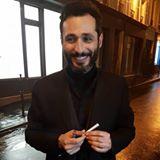Joao Vilhena

Name Joao
Surname Vilhena
Country Portogallo
Bio
Born in Portugal, João Vilhena lives and works in France. Graduated from Villa Arson, Vilhena practices drawing and painting from a neoconceptual position. In 2003 he received the Prémio Rothschild Painting Award. He showed in Drawing Now 2011 and 2012, Artissima Art Fair, Villa Arson, and Istres Contemporary Art Center. In 2010 he was featured in the contemporary drawing specialized magazine "Roven" (no°4, autumn/winter 2010−2011). In 2011 Galerie Alberta Pane presented his solo show "Deux lunes à l'autre", focusing on his latest obession: the moon.
João Vilhena's work is, and has always been, led by the interest he takes in the role of the beholder. For the artist a work is made by the look upon it, which activates it and creates its meaning. A virtuoso of the pencil and the word, João Vilhena feints, hides, substitutes end disguises without ever unveiling what lies beyond. To this purpose he uses different "stuff" like optical illusions, trompe l'oeils or anamorphoses, and in the works' titles spoonerisms, anagrams and other word games.
The trompe−l'oeil drawings of João Vilhena have almost no relief. The artist applies himself to the detailed reproduction of all sorts of paper (medical prescriptions, restaurant bills, post−its): through these curious drawings, Vilhena tries to challenge the observer, using trompe−l'oeil and the titles used related to his works. The artist also revisited some images of nineteenth century stereoscopic views.
(...) João Vilhena makes large-format drawings in black chalk on grey cardboard. They evoke closed worlds, with their own rules, shaped by fictions backing into fantasies. The artist takes inspiration from old postcards, using mirror images and doubling them up and folding them into each other. Some of these drawings are called Vues Hystéréoscopiques, a portmanteau word conflating stereoscopy, a photographic technique using two images to create an impression of relief, and hysteria. There is something not quite right in these images, as if the world was looking at itself in the mirror and not looking like itself. Not only is vision falsely binocular, it is also hystericized, through an ambiguous intention to eroticize. For Vilhena, "the langage for representation is always hysterical, and there is representation that is not erotic", that is to say, caught up in voyeurist, transgressive situation implying permanent questioning about the status of vision itself (...).

 ITA
ITA FRA
FRA ENG
ENG